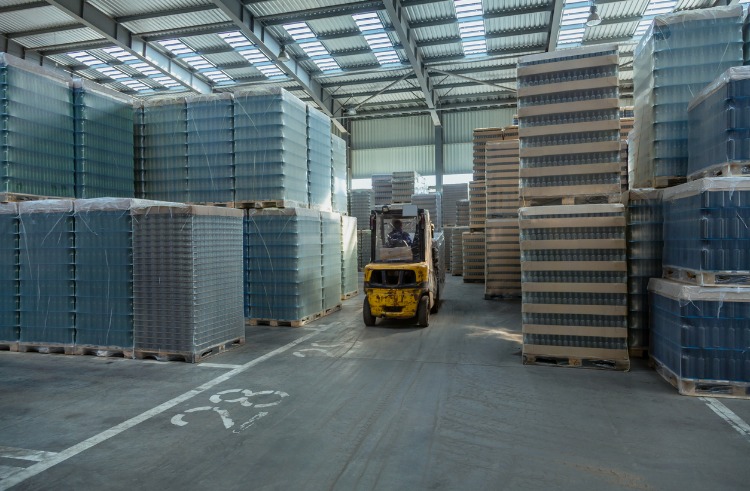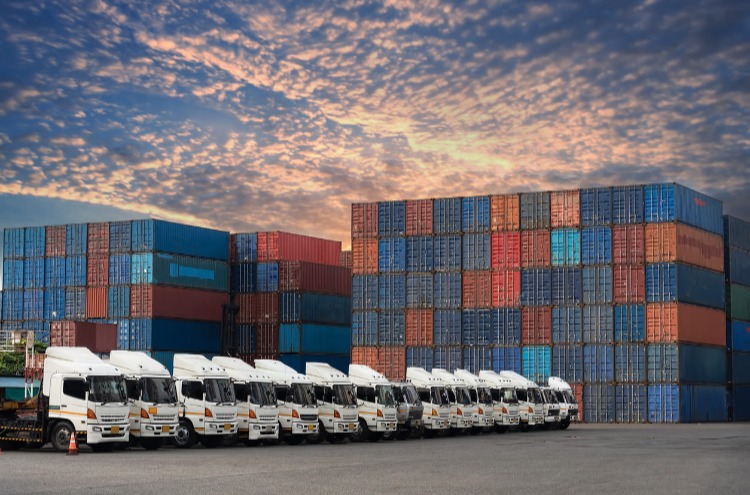The essential guide to wine preservation during shipping
Wine preservation during shipping is an important topic for anyone in the wine supply chain who want to protect the quality and safety of their products during transit. Imagine receiving your shipment of wine, only to find the wine is undrinkable due to damage in transit, or less attractive at the point of sale due to label damage. This can leave you needing to juggle insurance claims, loss of sales, and out of stocks, all of which are damaging for brand integrity and the bottom line of your business.
Maintaining the quality of imported wines throughout shipping requires careful planning. This involves wine preservation tools and technologies, such as temperature-controlled shipping containers, insulation liners and predictive climate systems. In this article, we’ll cover the unique challenges that wine encounters during shipping, and the wine preservation methods used to address them.
How long does wine preserve for?
The length of time that unopened wine can be safely stored varies from 1 year to several decades. Many factors affect the length of time for wine preservation, including the storage method and the properties of the wine itself.
What are the challenges of wine preservation during shipping?
There are many factors to consider when shipping wine internationally. Poor wine preservation can damage the quality and value of imported wines, rendering them unsalable. However, proper wine preservation methods can protect your wines withstand the demands of international shipping. Proper wine preservation techniques require an understanding of the factors that can damage your wine. These include:
Temperature fluctuations
Temperature fluctuations along the transport route can be detrimental to wine quality because it can cause changes in wine’s structure, accelerate its aging or ruin it.
Prolonged exposure to heat can also cause wine to age faster, resulting in a loss of color and acidity. Ultimately, this can mean previously fruity wine has a sour taste. The ideal temperature for wine is between 10 and 20°C, although fine wines are best stored below 17°C.
Humidity
The ideal relative humidity for wine preservation is around 70%, but this can be different depending on the wine itself. Humidity levels of 55-80% are recommended for fine wines, but below 50% humidity is best for commercial wines. During transport, wine can be exposed to extremes in temperature and humidity.
High humidity levels can cause mold growth on the wine bottle exterior and on the cork, which can contaminate the wine. Contrastingly, over time, low relative humidity can cause cork to contract and dry out, reducing their ability to seal wine bottles. It can also cause cork to crumble when the wine is opened, reducing customer satisfaction.
Similar musty or moldy aromas can be caused by 2,4,5-trichloroanisole (TCA) contamination that can develop when certain compounds are in contact with wood products used in the winemaking process. Wooden barrels used to transport wine require low humidity during transit to avoid these problems. Our integral insulation liner is another solution that provides a tested barrier against TCA and other contamination while reducing temperature and humidity fluctuations.
Vibration
Vibrations, even for a short period of time, can alter the quality and organoleptic properties of the wine, including its aroma. Excessive levels of vibration can increase the acidity of red wines, lead to an accelerated decrease in tannins, and lower the alcohol content of the wine.
Light exposure
Light exposure can also cause lightstrike, especially in sparkling wines, white wines and pale rosé. This can happen at any stage of the shipping, storage or even sales process if the wine is exposed to excessive light levels. It causes an initial loss of fruity flavors, followed by the development of unpleasant tastes that make the wine undrinkable. Storing your wines in a cool, dark place is the best way to prevent this problem. However, at some point it is likely that your wine will be exposed to light, such as in a point of sale environment. This fault can develop in white wine bottled in clear glass after only one or two days of light exposure in a typical sales environment, such as on display in a liquor store. Packaging your wine in green glass bottles can extend the shelf life of wine in these conditions.
Oxygen
When wine comes into contact with air, it will oxidize, leading to the development of an unpleasant vinegary taste. Wine making techniques, developed over thousands of years, have aimed to minimize the amount of wine that comes into contact with the air – hence the long-necked designs of wine containers, from ancient times to modern wine bottles.
Wine preservation during the import process
To preserve the taste of wine from bottling to consumption, the wine must be carefully handled throughout its journey. Choosing the appropriate transport mode, container type and packaging is important. It is also useful to look for specialist and reputable freight forwarders like Hillebrand Gori, who understand the importance of temperature, vibration, humidity and light control during the shipping process.
What is the best way to ship wine?
There are various ways to ship wine over long distances, all with pros and cons for wine preservation, as well as cost and speed. It’s important to work with a freight forwarder who understands and can adapt to the current state of global shipping.
Using a flexitank for your bulk wine shipment will help to protect your wine from oxygen migration and taint compounds during transit, thanks to their internal barrier layer. Wine transported via flexitank is less susceptible to temperature shocks too, due to the volume of the liquid carried.
Cased bottles of wine require careful handling and protection. Insulated and refrigerated containers offer additional temperature protection for sensitive products compared to a standard dry shipping container.
Choosing the most suitable time and route to ship your wine is also essential. Predictive climate tracking, such as built into our myHillebrandGori app, makes it easy to assess information about the climatic environment along your shipments routing.
The solution to wine preservation during shipping
To preserve the quality, aroma and freshness of your wine during transportation, it’s essential to correctly manage the temperature, humidity, light and vibration during shipping and storage. The packaging material you use, including pallet liners for added protection, is also a key factor in wine preservation. You can find all of the equipment, tools and knowledge you need to deliver your wine at HillebrandGori - get in touch today for more information.
Published 23rd October 2023
To extend the life of unopened wine, storing it in the right conditions is essential. A dark, cool space, such as a wine cellar or wine fridge, is ideal. This is because the optimum temperature for storing wine is between 10°C and 20°C (50°F and 68°F). In addition, keeping wine in a dark space avoids potential spoilage from lightstrike. Storing your wine in the correct conditions helps preserve the quality and freshness of unopened wine.
Most types of wine will remain fresh for a 2–3 days after opening, but there are a few things you can do to extend this.
Reseal the bottle: this slows the oxidation process, helping the wine stay fresh for longer. You can achieve this by reusing the original cork stopper, or using a bottle stopper.
Keep it in a cool place: storing opened wine in your fridge will prolong its freshness.
The aging potential of a wine depends on the wine itself, as well as other factors such as the winemaking practices, the wine’s vintage, and region. Wine with greater aging potential tends to have high quality of the grapes, mid to high level of tannins, high acidity, and high fruit concentration, among other traits.
Wines are often crafted to be enjoyed in a short period of time, and only a few fine wines have a long aging potential. However, fortified wines such as Madeira, Porto or Jerez have a much longer aging potential.
If you want to store your wine for a long time, it's advisable to read reviews, and follow recommended aging guidelines provided by the winery.

.png?sfvrsn=fc4f657e_1)



